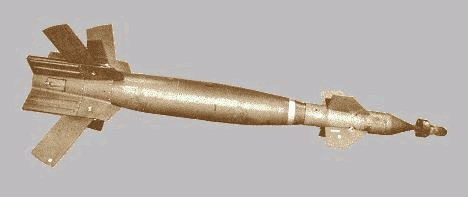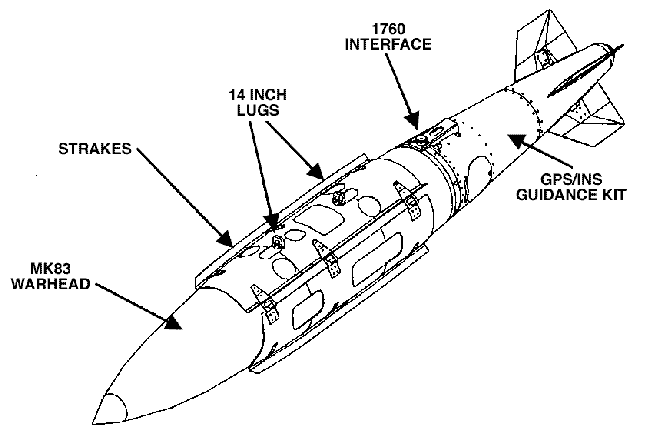|
||||||||||
|
|
||||||||||
|
||||||||||
|
|
||||||||||
|
|
|
||||||||||||||||||||||||||||||
|
Payload:The RFP requires the Storm Shadow to carry one 1,000 lb advanced guided bomb. The Raytheon GBU-16, pictured below, was first chosen because its Paveway laser guidance system is widely used by US armed forces. The guidance package and tail fins are attached to a Mk 83 1,000 lb bomb unit. The GBU-16 has a circular error probable (CEP) of 8 m, an installed weight of 1,092 lb, a length of 145 in, and a closed tail span of 26 in.

GBU-16 laser guided bomb componentsTo provide targeting information to the weapon during flight, the Storm Shadow is equipped with a laser targeting system. This system is mounted to the FLIR fire control system in the nose of the aircraft, as is done on the F-117. The targeting beam passes through a wire grid screen that is also based upon that used in the IRADS bay of the stealth fighter. This targeting bay is located along the leading edge of the Storm Shadow near the nose of the vehicle. The wire grid screen is constructed to allow laser energy to pass through it while reflecting radar waves to maintain low observability.

GBU-16 Paveway laser guided 1,000 lb bomb with wings deployedThough highly accurate, the Paveway system requires the target to be designated by some external source throughout the entire flight of the weapon. A new approach to precision guided weapons is the use of the Global Positioning System (GPS). The advantage of GPS-guidance is that the weapon requires no further information from the launch platform and is able to guide itself to a set of coordinates using information from GPS satellites. A new class of guided bombs taking advantage of this capability is currently under development at the time of this design study. Designed by Boeing and known as the Joint Direct Attack Munition (JDAM), the system is composed of a tail kit that can be strapped on to an existing unguided bomb.

GBU-32 GPS guided bomb componentsThe example chosen for this study was the GBU-32 JDAM that uses the differential global positioning system (DGPS) and an inertial navigation system (INS) for guidance in all weather conditions. The bomb is also based on the Mk 83 1,000 lb bomb, but the nose and tail assemblies are smaller than those of the GBU-16. The JDAM has a CEP of 13 m, and targeting information can be pre-programmed or provided through mid-flight target acquistion. The GBU-32 weighs 1,035 lb installed, is 126 in long, and has a closed tail span of 22 in.

GBU-32 DGPS/INS guided 1,000 lb bombPayload Bay:The payload is carried internally to reduce the aircraft's radar cross section. The bomb bay was sized to standard military specifications. In addition, the doors were designed with saw-tooths to reduce edge diffraction for improved stealth characteristics. The dimensions of the bay are given below. The bomb is mounted on a Boeing 4010 series rack designed for use with 1,000 lb weapons. The rack uses a pneumatic release mechanism rather than explosives for safer and faster rearming and greater reliability in the delivery of the weapon.
Bomb Bay Dimensions
|


|
Aircraft | Design | Ask Us | Shop | Search |

|
|
| About Us | Contact Us | Copyright © 1997- | |||
|
|
|||